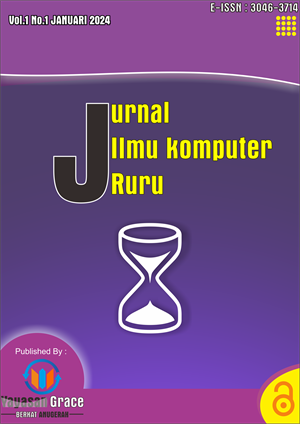PENGEMBANGAN MODEL FUZZY TSUKAMOTO UNTUK EVALUASI KELAYAKAN DAN KEEFEKTIFAN PENERAPAN KELUARGA BERENCANA ALAMI (KBA) DALAM KONTEKS KESEHATAN REPRODUKSI
Keywords:
Natural Family Planning (KBA), Fuzzy Tsukamoto, Evaluation, Reproductive Health, Development ModelAbstract
The implementation of Natural Family Planning (KBA) has become an increasingly considered approach in an effort to improve reproductive health. However, evaluation of the feasibility and effectiveness of KBA implementation requires a systematic and comprehensive approach. In this study, we introduce the development of the Fuzzy Tsukamoto model as a tool to evaluate the feasibility and effectiveness of implementing KBA in the context of reproductive health. The Fuzzy Tsukamoto model is used to evaluate various factors that affect the feasibility and effectiveness of implementing KBA, including social, economic, health, and user satisfaction aspects. The fuzzy approach allows us to deal with uncertainty and complexity in the data associated with these evaluations, as well as to integrate expert knowledge into the decision-making process. This research will cover the stages of Fuzzy Tsukamoto's model development, including the identification of input and output variables, the establishment of fuzzy rules, and the implementation of a fuzzy inference system. We will collect data from KBA-related case studies or surveys to train and test the developed model. In addition, we will also perform a sensitivity analysis to evaluate the reliability and robustness of the model to parameter variations. It is hoped that the results of this study will provide valuable guidance for reproductive health practitioners, policy makers, and other relevant parties in assessing and improving the implementation of KBA. By utilizing the Fuzzy Tsukamoto model, it is hoped that the feasibility and effectiveness evaluation of KBA can be carried out in a more holistic and trustworthy manner, thus encouraging efforts towards better reproductive health overall.
References
F. Liwang et al., “Gambaran penggunaan kontrasepsi hormonal dan non hormonal di wilayah kerja UPT Puskesmas Tampak Siring 1,” Fak. Kedokt. Univ. Sam Ratulangi, vol. 9, no. 3, pp. 41–46, 2018, doi: 10.1556/ism.v9i3.301.
Z. Zettira and K. Nisa, “Analisis Hubungan Penggunaan Kontrasepsi Hormonal dengan Disfungsi Seksual pada Wanita,” Majority, vol. 4, no. 7, pp. 103–108, 2015, [Online]. Available: https://juke.kedokteran.unila.ac.id/index.php/majority/article/viewFile/1457/1292.
S. Abdullah, J. Bawotong, and R. Hamel, “Hubungan Pemakaian Kontrasepsi Hormonal dan Non Hormonal dengan Kejadian Kanker Serviks di Ruang D Atas BLU Prof. Dr. R.D. Kandou Manado,” J. Keperawatan UNSRAT, vol. 1, no. 1, p. 105599, 2013.
D. A. D. Agustina, M. J. D. Sunarto, and Romeo, “Rancang Bangun Aplikasi Penentu Masa Subur Wanita Berbasis Android dengan Metode Keluarga Berencana Alamiah,” J. JSIKA, vol. Vol 6, no. No 3, 2017.
T. Sutojo, E. Mulyanto, and V. Suhartono, Kecerdasan Buatan. Yogyakarta: ANDI, 2011.
S. Kusumadewi and H. Purnomo, Aplikasi Logika Fuzzy untuk Pendukung Keputusan Edisi 2. Yogyakarta: Graha Ilmu, 2005.
F. Susilo, Himpunan dan Logika Kabur serta Aplikasinya. Yogyakarta: Graha Ilmu, 2006.
A. Haris, “Penerapan Metode Fuzzy Tsukamoto untuk Menentukan Kualitas Proposal Layak Hibah,” vol. 12, no. 1, pp. 1–8, 2019.
N. I. Kurniati, R. R. El Akbar, and P. Wijaksono, “Penerapan Metode Fuzzy Tsukamoto Pada Sistem Pakar untuk Mendiagnosa Autisme Pada Anak,” Innov. Res. Informatics, vol. 1, no. 1, pp. 21–27, 2019, doi: 10.37058/innovatics.v1i1.676.
V. A. Lestari and E. L. Amalia, “Implementasi Fuzzy Inference System untuk Menentukan Alat Kontrasepsi Program Keluarga Berencana,” Sistemasi, vol. 10, no. 1, p. 239, 2021, doi: 10.32520/stmsi.v10i1.1198.
Downloads
Published
Issue
Section
License
Copyright (c) 2024 Jurnal Ilmu Komputer Ruru

This work is licensed under a Creative Commons Attribution-ShareAlike 4.0 International License.




